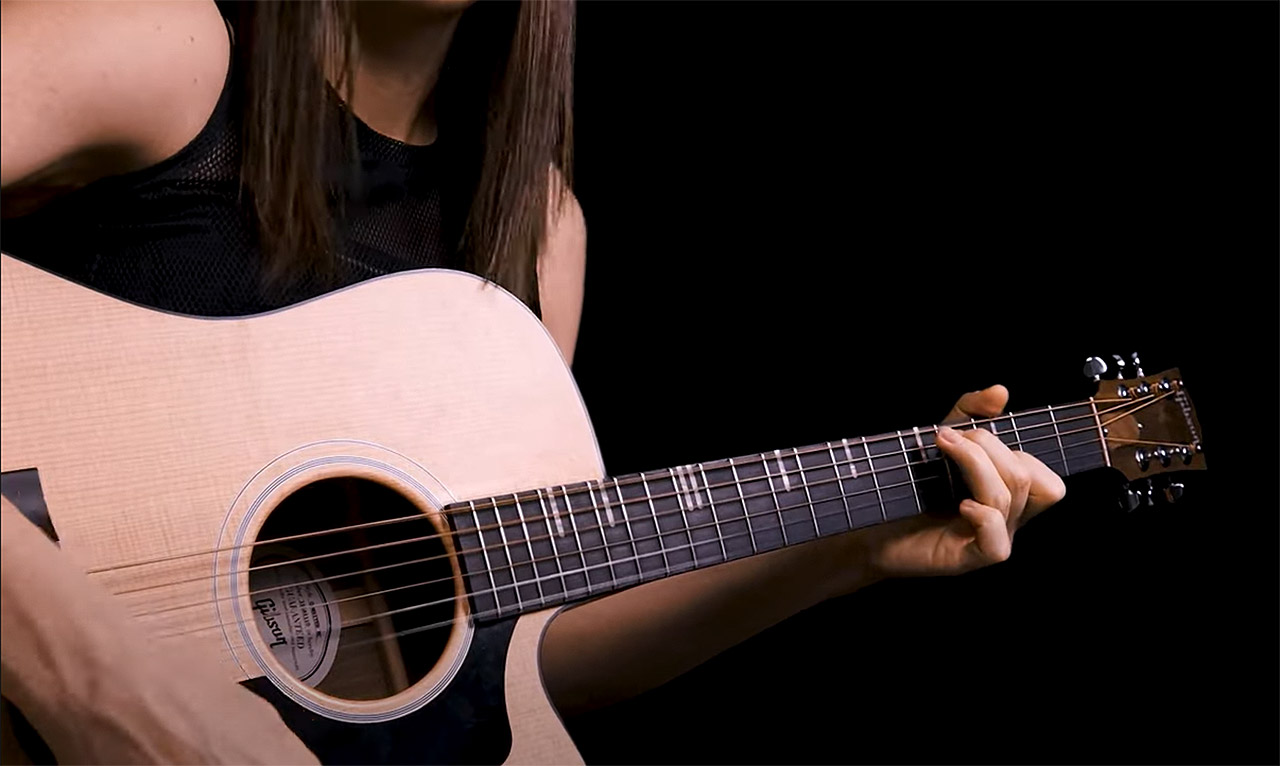Get efficient transitions happening using this simple concept
Continuing the concept of “anchoring” from the previous Gibson App lesson, here Irene Ketikidi shows you how to use your pinky finger as an anchor while everything is changing around it to produce a G-C-Am7-Fadd9 sequence with a simple but effective strumming pattern. Depending on the voicings, any finger might serve in other progressions since anchoring is a concept that may apply to one finger, or a set of fingers.
The key to this technique is paying attention to the notes that change while the anchor, which does not change, conserves motion energy, thus obtaining smoother chord transitions. Irene also mentions making sure you grab the lowest note of the chord quickly so that it’s expressed clearly, and the chord sounds grounded on the root.
A couple of the chords require you to think ahead about which of the two or three changing notes ought to land first for the smoothest transition. It’s all happening fairly quickly, but some transitions feel smoother if you’ve thought through the exact manner in which the changing notes are fretted. Ultimately, whatever you do repeatedly is what you’re wiring your brain and muscles to do, so try to find the most logical way and listen to it carefully to determine if it actually sounds like a smooth transition.
Finding an anchor in other techniques
In a sense, many guitar techniques are built on the idea of maintaining a portion of a chord or sequence of notes while decorating with changes—funk guitar is an obvious example of this because of how important dissonant passing notes become when combined with the more important diads and triads, plus lots of syncopation. In essence, a funk guitarist decorates the main chord voicings, creating exciting extensions and creating opportunities to drop in fast and fancy rhythmic figures.
A similar thing happens with some tapping techniques because there’s at least an anchor in the fretting hand (though that may move around, too) and then tapping takes place above that note, creating a creative rhythmic and melodic pattern.
Let “sticking with it” rule the day, and be sure to practice all of this slowly until it’s ingrained. Then, reach for performance speeds and enjoy the fruits of having worked efficiently for a solid technique that allows for creativity and expressiveness to emerge, no matter what chords you employ in your music.
Explore the world of the Gibson App today and start your free trial on iOS and Android devices.

